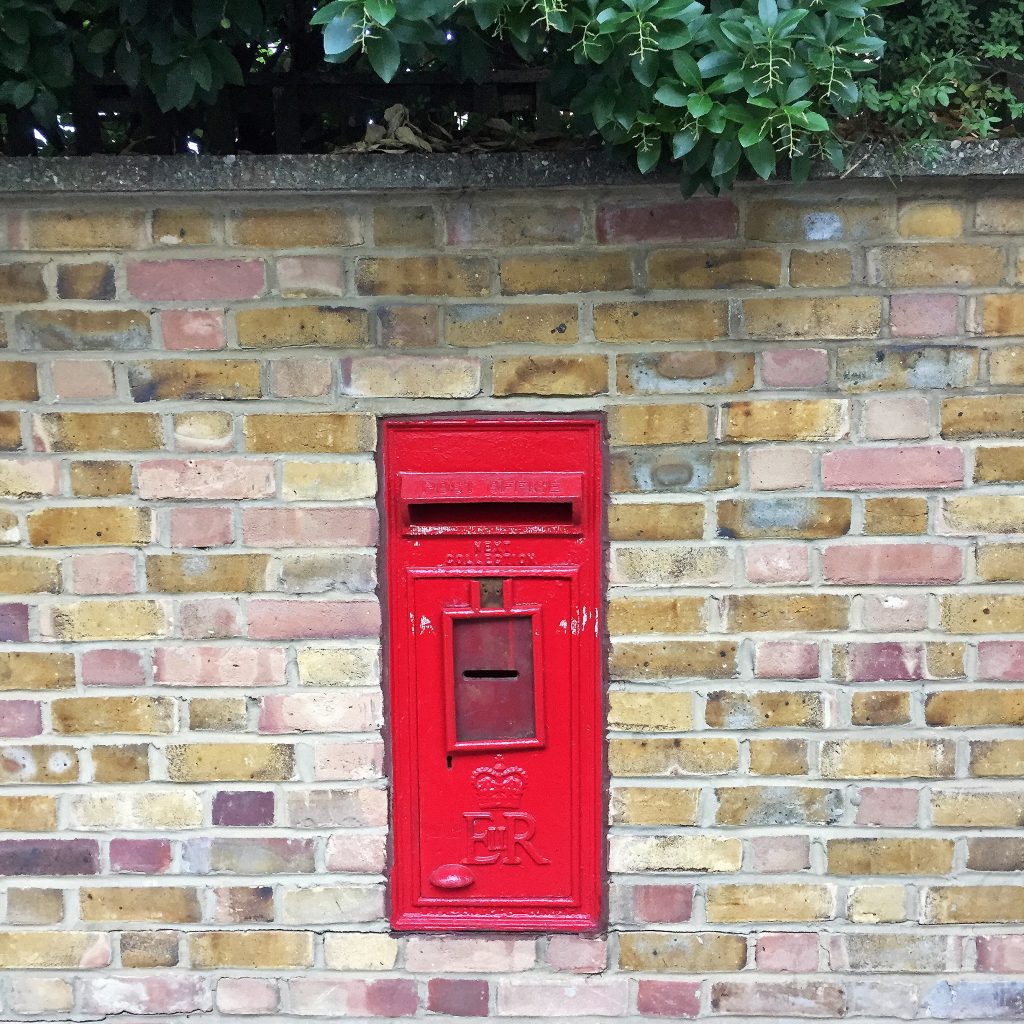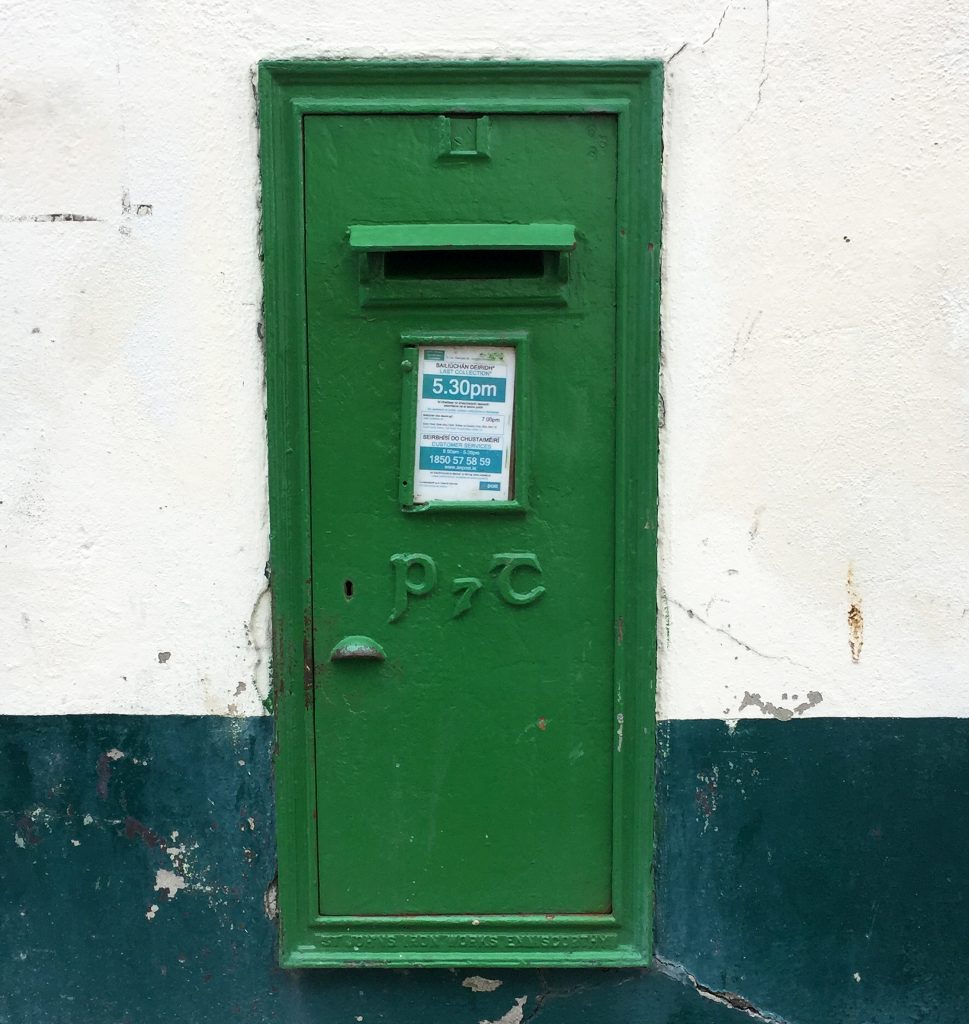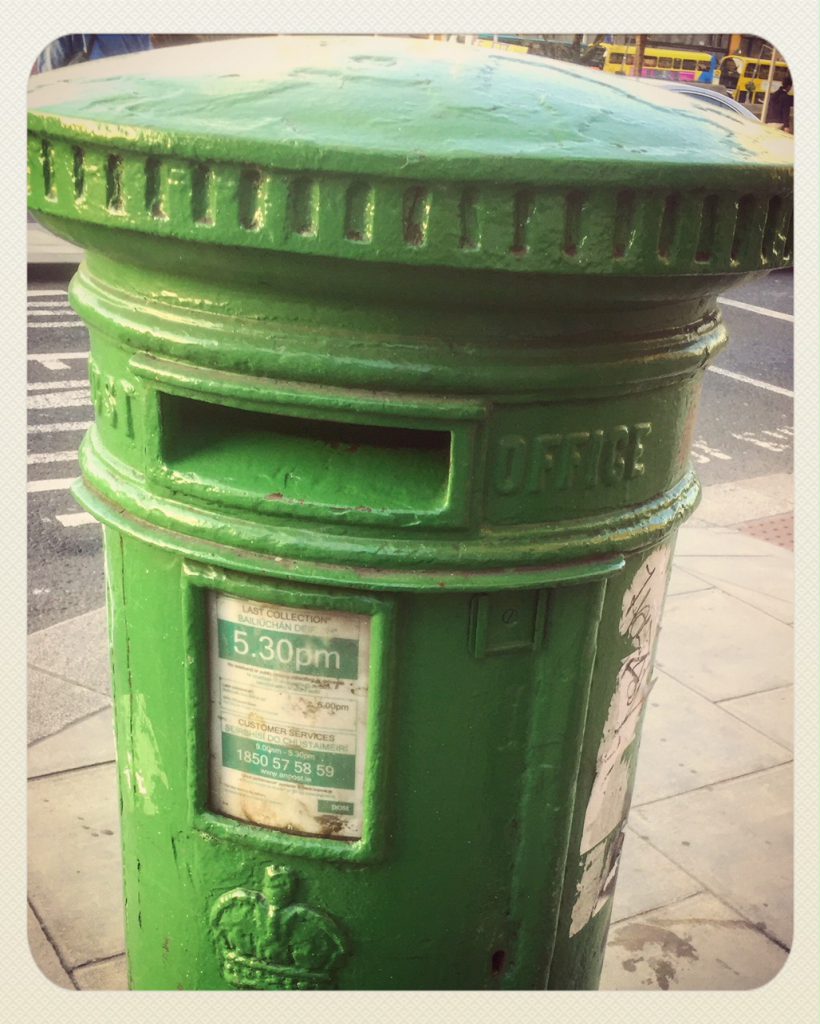England and Ireland – they’re different. As a child I’d always grasp this when I looked around a street in Dublin or London and saw a postbox. Irish postboxes are green and in England (and Scotland, Wales and Northern Ireland) they’re red.
To the Irish eye, this English red can seem brash, a show of strength and a reminder of how these boxes were once found all over the British empire, built to work as nodes in a vast web of communication. The green of an Irish postbox – built in the same shapes and sizes, standalone pillars and stuck into walls – seem more humble, bringing a sense of ease, gentleness, nature.
The red of England (thought by some to represent the dragon’s blood of the cross of St George) is everywhere you look in the UK: London buses, phone boxes, Beefeaters, the Red Arrows, Red Ensign, the England jersey, Virgin. Even the Irish Guard – the British Army regiment served by Irish citizens and official guard of the Queen – have bright red uniforms.
Understandably, when Ireland gained independence from Great Britain in 1922, the new Irish government went mad turning things green: postboxes, buses, phone boxes, soldiers’ uniforms, and on to today with St Patricks’ Day* beer and our sport heroes, known as the Boys/Women/Girls in Green.
As for postboxes.
They were introduced in England by Anthony Trollope – novelist and yes, post office worker – after he saw the idea in France. Once penny postage was introduced in England in 1840, the postal service took off and postboxes were put in place in the 1850s for people to avoid trekking to the post office and to take pressure off postal workers.
And here’s the thing. English postboxes started off as green. This was to make them blend “pleasingly” into the landscape. But after a few years it was decided they didn’t stand out enough so red was chosen as a good strong colour and in 1874 someone went around the country (and Ireland) to paint them all red.
Ireland got its first postboxes in 1855 (in Belfast, Ballymena and Dublin) so technically these were green, then red, and then green again after 1922. Many Irish boxes still show the marks of old Empire: ER (Edward Rex), GR (George Rex), VR (Victoria Regina) and the scripts of the Irish P&T and An Post. But look very closely and you might still see a hint of red paint peeking from underneath the green.
English postboxes are coloured “pillarbox red” (or RGB 223, 52, 57) and the Irish ones – well they were painted whatever green was available when the paint job was done.
During the 2016 commemorations of the 1916 Easter Rising, some postboxes in Dublin were painted red–and people noticed the difference.
My romantic side likes to think how of the many letters and parcels sent back and forth between Ireland and England – catalogues for silk dresses, newspapers, books, and letters between families. But think of how many stories of poverty and loneliness and despair were also communicated.
Inside and out, how much history between two countries can you fit into one old cast-iron box?
*The green is not really connected to St Patrick – for centuries the colour most associated with him was blue, but green has been the dominant colour of Irish nationalism since the late 18th century.



Fascinating, thanks – I do enjoy your writing.
However, I think you may find that VR stands for Victoria Regina rather than Victoria Rex 😉
(from a fellow translator and proofreader!)
Ah yes you’re right! Thanks for that, glad you read it so thoroughly. (And my husband was even born in Regina).
The first post box in Ireland was post independence in 1925 so they were never red.
Well all the new postboxes since the 1920s were green (and never red). The old Victorian ones are still scattered around the country and they were painted green then, but still show the marks I mention – VR, GR, ER etc.